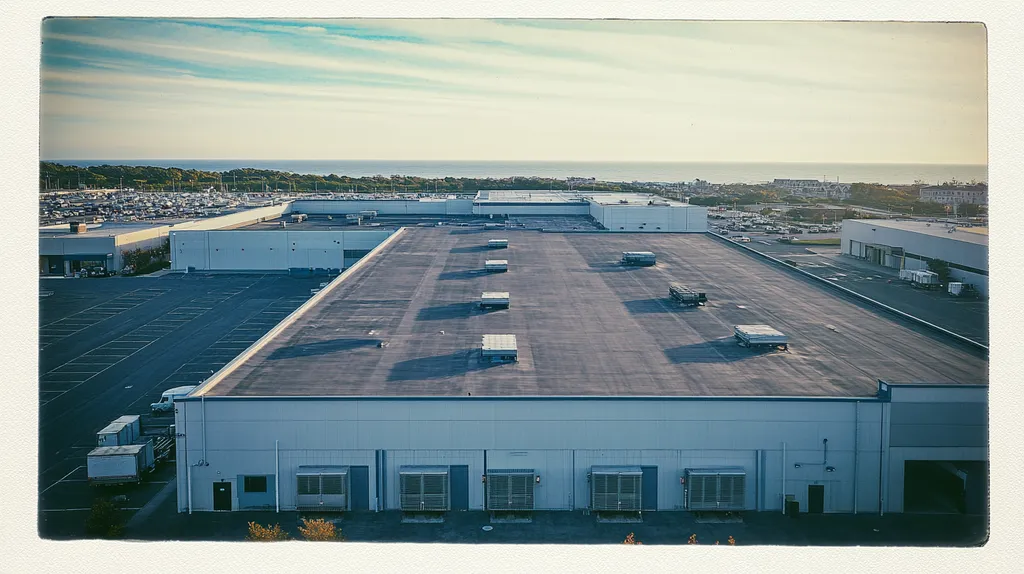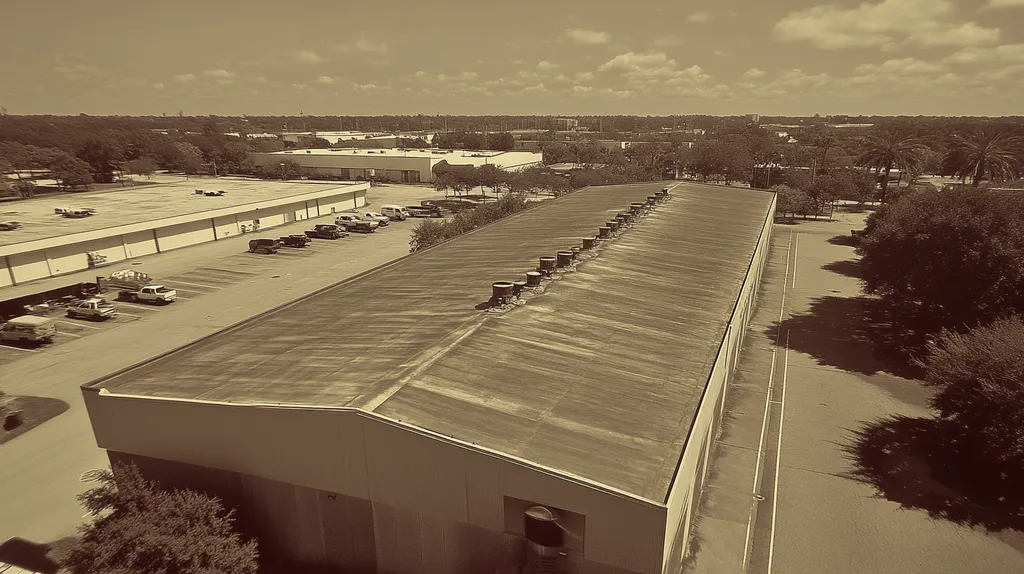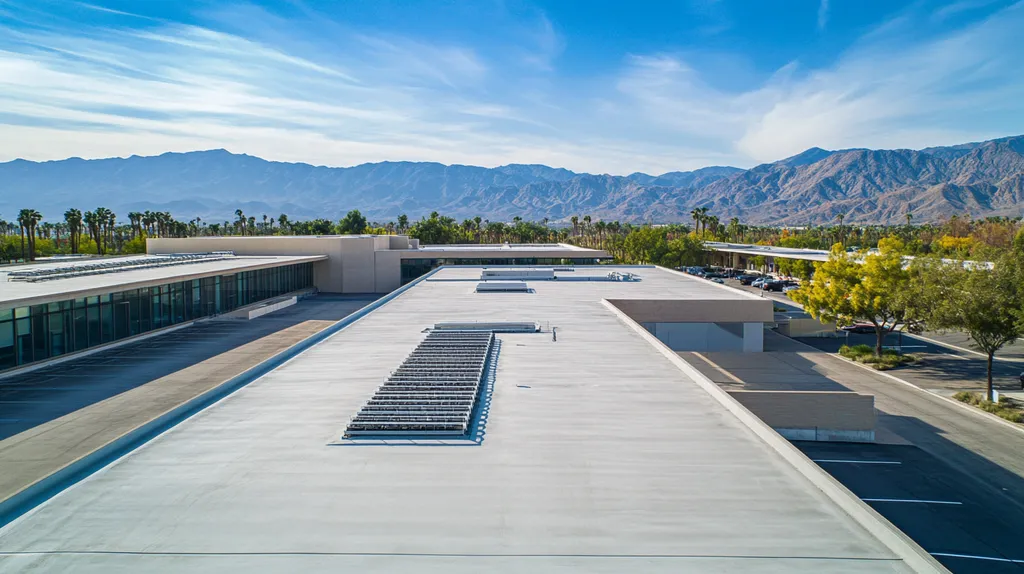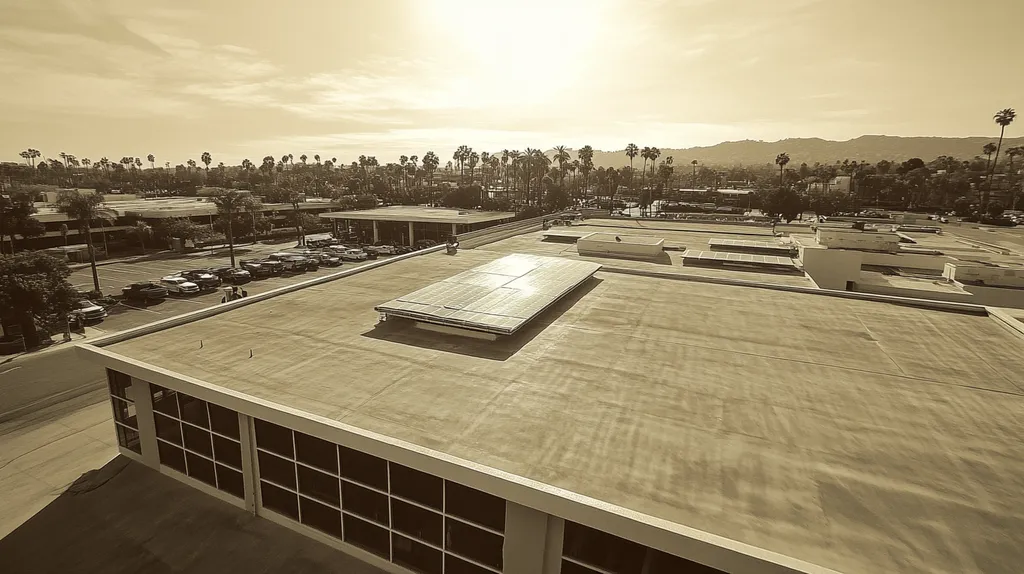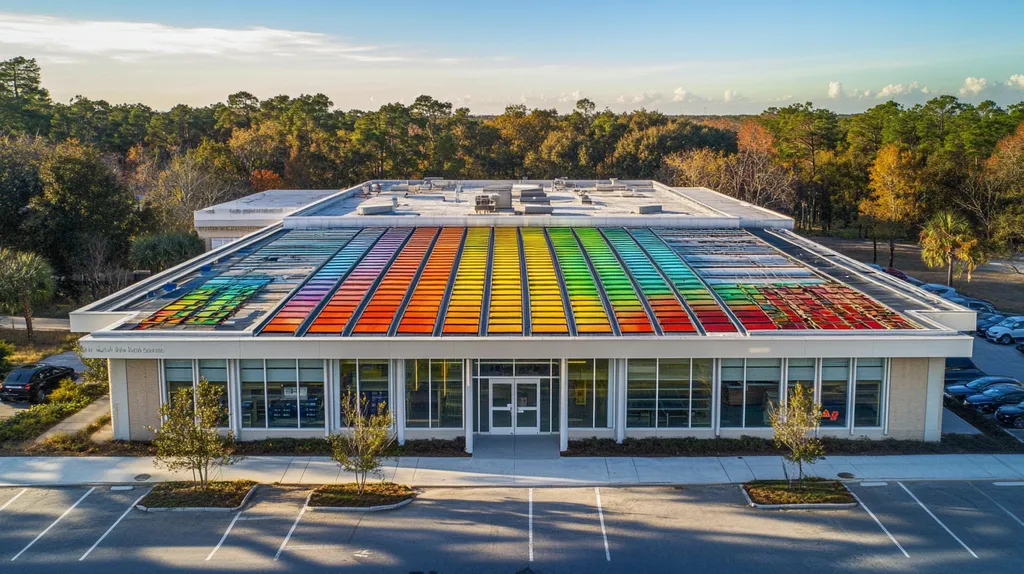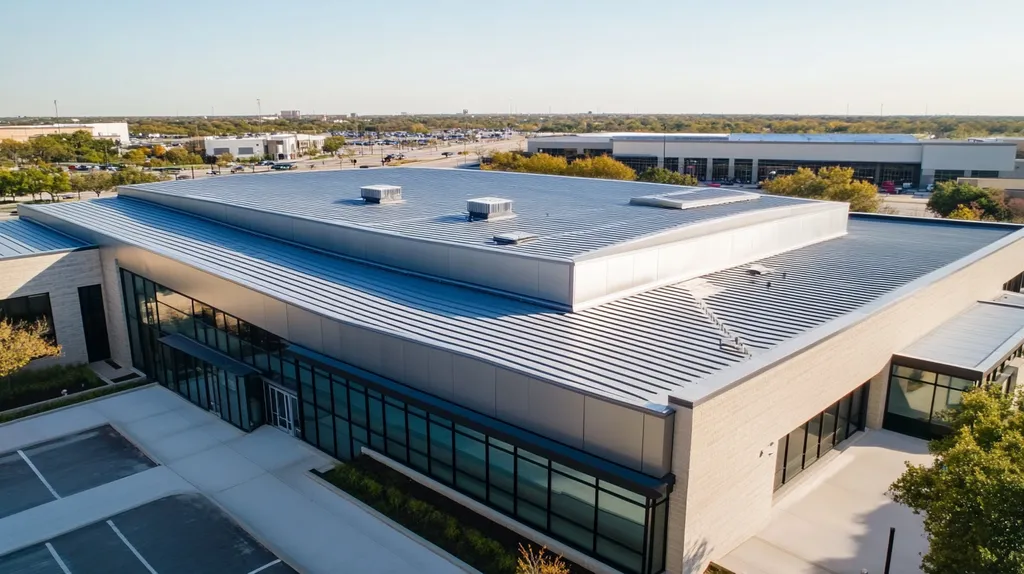Commercial roof warranties represent a critical safeguard for property owners, yet studies show that up to 60% of warranty claims are denied due to preventable maintenance issues and documentation gaps.
These denials result in billions of dollars in out-of-pocket repair costs annually across the commercial real estate sector, highlighting systemic flaws in traditional prevention methods.
By examining current warranty practices, underlying causes of claim denials, and data-driven solutions, this analysis challenges conventional approaches while offering actionable strategies to protect commercial roofing investments.
SECTION 1: CURRENT PRACTICES
Understanding commercial roof warranties is vital for property owners and facility managers. A single roofing failure can lead to significant financial losses and complicate warranty claims. Alarmingly, studies indicate that improper maintenance can void warranties for up to 60% of roof systems. By dissecting current warranty practices, property owners can pinpoint gaps that may result in costly repercussions. This section will explore the types of commercial roof warranties, standard durations and coverage, as well as common exclusions and limitations that can jeopardize claims.
Types of Commercial Roof Warranties
Commercial roof warranties are typically divided into two main categories: material and workmanship. Material warranties provide protection against defects in roofing materials, such as peeling, cracking, or poor weather resistance. Conversely, workmanship warranties focus on issues stemming from the installation process, covering concerns like leaks and improper sealing.
Some manufacturers offer a comprehensive warranty package, combining both types. However, coverage can vary significantly among manufacturers. While some warranties may offer limited protection, others can provide extensive coverage. Familiarizing oneself with these categories is essential for property owners to choose the right warranty that addresses their specific needs.
Moreover, certain warranties are linked to specific performance standards, requiring that roofs be maintained according to the manufacturer’s guidelines. Understanding the intricacies of these warranties is key to ensuring long-term protection against roofing issues.
Ultimately, property owners must evaluate whether their selected warranty provides adequate coverage tailored to their facility’s requirements, empowering them to minimize future risks effectively.
Standard Warranty Durations and Coverage
Commercial roof warranties generally range from five to 30 years, varying by roof type and manufacturer. For instance, single-ply membrane roofs may be covered for up to 20 years, while built-up roofs might carry warranties lasting 30 years. Longer warranties often offer greater peace of mind, although they usually come with higher costs.
During the warranty period, protection typically includes material defects and certain types of damages. However, routine maintenance and inspections usually fall to the property owner to keep the warranty valid. This reliance on regular upkeep can complicate claims if maintenance schedules are neglected.
It’s crucial for facility managers to remain proactive about their maintenance responsibilities to avoid potential pitfalls. By understanding the specific terms of each warranty type, property owners can better strategize their maintenance efforts and maximize the benefits of their warranties.
Common Exclusions and Limitations
Many commercial roof warranties include exclusions that can greatly affect their applicability. Common exclusions encompass damage from natural disasters, vandalism, and neglect. For example, if a roof sustains hail damage but the facility manager fails to conduct regular inspections, the warranty may not cover repair costs.
Faulty installation practices also pose a significant limitation. If a roof is not installed per manufacturer specifications, even minor issues may void the warranty. This underscores the importance of selecting certified contractors for both installation and repairs.
Additionally, some warranties may specify exclusions for certain components, such as flashing or insulation. Overlooking these limitations can lead to unexpected expenses down the road. To maximize warranty effectiveness, property owners and facility managers must remain acutely aware of these exclusions and adjust their maintenance and repair practices accordingly.
SECTION 2: SYSTEMIC ISSUES
Commercial roofing warranties serve as essential safety nets for property owners, but systemic issues within the industry often create vulnerabilities that can undermine these protections. A significant 30% of roofing failures can be traced back to workmanship errors, leaving property owners at risk when they submit claims. It is crucial to identify and address these systemic gaps to prevent substantial financial losses and extend the lifespan of roofing systems.
Gaps in Workmanship and Material Coverage
One prevalent issue is that many warranties fail to adequately cover workmanship errors. Industry reports reveal that improperly installed roofs frequently result in warranty denials. Property owners may find that the very deficiencies causing leaks or other damage are not covered, leading to substantial repair costs.
Moreover, warranties often include ambiguous language about the materials used. For instance, if the wrong type of insulation is installed, claims can be denied due to non-compliance with specifications. Clear, specific definitions of acceptable materials and installation practices are essential to avoid misunderstandings and safeguard investments.
Notably, some manufacturers craft warranties that seem comprehensive but contain significant loopholes. These gaps can be exploited by insurers to deny claims, placing property owners at a serious disadvantage. Stakeholders must advocate for transparency in warranty documentation to mitigate these risks.
Ongoing training for installation crews is vital. Ensuring that teams are well-versed in the latest installation practices can help achieve better compliance with warranty terms, ultimately protecting property owners from potential financial setbacks.
Lack of Comprehensive Maintenance Requirements
A frequent problem with roofing warranties is the absence of clear maintenance requirements. While many contracts state that regular maintenance is necessary, they often fail to detail what “adequate upkeep” actually entails. This lack of clarity can lead to disagreements when a claim is made.
Property owners may mistakenly think that occasional inspections satisfy warranty conditions. Without established maintenance schedules, they risk failing to comply with warranty terms. For example, some warranties may mandate quarterly inspections while others might require them biannually; this ambiguity creates exploitable gaps.
Furthermore, the lack of mandated maintenance can accelerate wear and tear, compromising the longevity of the roof. Routine care is essential for extending the life of any commercial roof, and neglect can result in overwhelming financial consequences.
To address this issue, property owners should seek detailed maintenance guidelines during the warranty negotiation process. Being clear about what is required can ensure compliance is achieved, thereby preserving warranty coverage and reducing future expenses.
Inadequate Protection Against Consequential Damages
Another significant systemic issue in roofing warranties is the insufficient protection against consequential damages. Many warranties focus solely on the roof system, omitting coverage for losses stemming from roof failures. For example, businesses may suffer revenue loss due to operational downtime caused by leaks, yet warranty claims for these consequential losses are often insufficient.
The ripple effects of roofing failures can be extensive. Water damage can lead to mold growth, which introduces health risks and inflates repair costs. Many warranties do not cover these indirect consequences, leaving property owners exposed to unanticipated financial burdens.
Additionally, the financial impact associated with indirect damage can eclipse the costs of initial roof repairs. Property owners may face significant bills that surpass the expenses related to mere roof replacement, making it challenging to recoup these costs from insurance or warranty providers.
To guard against such risks, stakeholders should advocate for broader warranty coverage that encompasses consequential damages. This proactive approach encourages manufacturers to take responsibility for the full range of potential losses linked to roofing failures, fostering a more equitable system for property owners.
SECTION 3: MISSED OPPORTUNITIES
Neglecting preventive maintenance on commercial roofs can lead to staggering financial losses and extensive damage. Research indicates that regular inspections can reduce the likelihood of leaks by as much as 70%. Property owners and facility managers must grasp how missed maintenance opportunities not only compromise the roof’s integrity but also threaten warranty claims, making this understanding vital for effective roof management.
Neglect of Preventive Maintenance
Preventive maintenance is a key strategy in protecting commercial roofs. Regular inspections and timely repairs can identify potential issues before they develop into severe complications. Without proper attention, even minor leaks can undermine the entire roofing structure.
The financial implications of neglect can be extreme. For example, a 10,000-square-foot commercial building facing unaddressed damage can incur repair costs exceeding $100,000 when a simple retrofitting process might have only cost about $10,000. These stark differences emphasize the critical role that consistent maintenance plays in safeguarding assets.
Additionally, warranties frequently stipulate the necessity of documented maintenance to remain valid. Therefore, neglecting routine checks may result in steep out-of-pocket expenses for required repairs or replacements.
Ultimately, property owners need to acknowledge that ignoring preventive maintenance not only jeopardizes their roofs but can also erode the financial protections that warranties are meant to provide.
Overlooking Customizable Warranty Terms
Many property owners miss opportunities to leverage customizable warranty terms that safeguard against unforeseen challenges. Warranty contracts often offer flexibility and can be tailored to a building’s unique risks. Failing to explore these options can greatly limit financial protection.
For instance, specific coverage might be available for distinctive weather-related damages or localized risks. By not negotiating these terms, owners could expose themselves to significant financial losses when claims arise.
Moreover, some property owners rush into accepting standard warranties without fully evaluating their individual needs. Customized warranties can offer broader protections aligned closely with materials used and environmental challenges faced by the building.
A proactive discussion with roofing professionals about available customization options is essential. Without such engagement, property owners risk being inadequately covered when issues emerge, resulting in costly repairs that lack warranty support.
Failure to Address Catastrophic Events
In the aftermath of such events, property owners often scramble to assess damage while navigating the complex claims process. Prompt inspections following these occurrences are vital to ensure all damage is documented and warranties remain valid.
Overall, education on potential risks and mitigation strategies can protect property owners from the financial repercussions of catastrophic events. Implementing comprehensive maintenance plans can be the difference between severe losses and effective recovery.
SECTION 4: ROOT CAUSES
The stakes are alarmingly high when it comes to commercial roof warranties. A staggering 60% of warranty claims are denied due to misunderstandings or insufficient documentation. Property owners often grapple with how these oversights can lead to massive financial burdens and losses. Identifying the root causes of these issues is essential for protecting investments and ensuring enduring roof performance.
Misunderstanding of Warranty Terms and Conditions
Many property owners struggle to fully comprehend their roof warranty terms, which can result in costly oversight. For instance, some might mistakenly believe that their warranty covers all types of damage, overlooking critical exclusions related to improper maintenance.
Misconceptions are common, such as the belief that warranties automatically renew or protect against normal wear and tear. In reality, each warranty comes with specific conditions that must be met for coverage to apply. Failure to adhere to these terms can lead to significant financial losses.
Warranties distinctly outline the responsibilities of manufacturers and property owners. Understanding these duties is crucial for preventing disputes and protecting one’s investment. Ignoring important details can leave owners vulnerable when they need support the most.
Education is the best defense against misunderstandings. Property owners should carefully read their warranty documents and seek advice from roofing professionals when unclear. This proactive approach can reduce risks and enhance the roof’s long-term integrity.
Inadequate Communication Between Parties
Effective communication is critical in the roofing industry, but it often falls short. Misalignment between property owners, contractors, and manufacturers frequently leads to misunderstandings that complicate warranty claims. For example, if a contractor fails to communicate essential installation details, it can jeopardize the warranty’s validity.
Maintaining regular check-ins among all parties can clarify expectations and responsibilities. Often, property owners remain unaware of the regular maintenance required to preserve their warranty rights. Frequent updates can ensure owners understand these crucial requirements.
Documentation should also be clear and accessible. Providing a checklist of maintenance tasks can help ensure compliance. This proactive strategy prevents gaps in communication that may lead to warranty disputes down the line.
Establishing open channels of communication fosters collaboration. Enhanced interactions not only facilitate better compliance but also build trust among all stakeholders. Such trust is essential for addressing roofing issues before they escalate into denied claims.
Insufficient Inspection and Reporting Protocols
A lack of effective roof inspection and reporting protocols is a prevalent issue for many commercial properties. Regular inspections are vital for spotting problems before they escalate into serious damage. Yet, property owners often underestimate the importance of a proactive inspection schedule.
For instance, skipping just one inspection could mean missing critical maintenance needs, like addressing membrane deterioration or hidden leaks. Without timely reporting, these issues can escalate, jeopardizing warranty coverage and amplifying repair costs.
Creating a comprehensive inspection schedule can significantly benefit property owners. Collaborating with experienced roofing professionals to establish a consistent protocol will help ensure that all findings are properly documented and reported.
Incorporating technology, such as drones for aerial assessments or mobile apps for reporting, can improve the accuracy of inspections. These tools can streamline the process, making it simpler to track issues and stay compliant with warranty obligations.
Ultimately, developing robust inspection and reporting protocols can safeguard a property’s investment in its roofing system. By adopting a proactive stance, property owners can reduce risks and uphold warranty claims, reaping the full benefits of their roofs.
DATA DRIVEN EVIDENCE
The stakes in the commercial roofing industry are significant, particularly when it comes to warranty claims. Alarmingly, research shows that nearly 50% of roofing warranty claims are denied due to inadequate maintenance and lack of proper documentation. Property owners must grasp the critical role data plays in enhancing their roofing strategies. This section explores statistical analyses, the impact of maintenance on roof lifespan, and a cost-benefit analysis of extended warranties.
Statistical Analysis of Warranty Claims
Statistical data reveals that a significant portion of commercial roof warranties become invalid due to improper care and maintenance. Studies indicate that over 60% of warranty claims are denied, often because property owners fail to provide sufficient documentation of regular upkeep. This underscores the vital need for maintaining detailed maintenance logs to meet warranty requirements.
Additionally, industry insights show that roofs receiving regular inspections and repairs can last an average of 15 years longer than those that are neglected. This data reinforces the necessity for rigorous maintenance efforts among property owners.
Failing to maintain roofs can lead to denied claims and the added burden of costs associated with premature failures. A thorough understanding of warranty-related statistics empowers facility managers to make strategic decisions about their maintenance schedules.
Without data-driven maintenance strategies, property owners risk undermining their investments. This highlights the importance of a proactive approach to managing both warranties and roof maintenance.
Impact of Maintenance on Roof Lifespan
Regular maintenance is crucial for extending the lifespan of commercial roofs. For instance, roofs that undergo annual inspections can achieve a lifespan increase of up to 30%. These inspections catch minor issues before they escalate into major problems.
A recent survey revealed that property owners who enforce a routine maintenance program save, on average, 50% on repair costs throughout a roof’s lifespan. This evidence illustrates the financial advantages of committed upkeep.
Preventive measures, such as debris removal and timely leak repairs, significantly lower the risk of more extensive damage. Statistical evidence shows a strong correlation between consistent maintenance and a decrease in warranty-denied claims.
Therefore, property owners should prioritize a structured maintenance plan as an integral part of their roofing strategy. This investment not only secures the integrity of the roof but also shields against future financial issues arising from warranty complications.
Cost-Benefit Analysis of Extended Warranties
Extended warranties present a dual challenge in the commercial roofing realm. While they can provide valuable financial security, their associated costs can be considerable. Data indicates that property owners who invest in extended warranties typically pay 20% more in premiums, often due to non-compliance with maintenance guidelines.
In cases where extended warranties are claimed, studies found that 80% of claims were either partially or wholly denied due to incomplete maintenance records. This statistic undermines the anticipated benefits of such coverage.
Conversely, when managed correctly, extended warranties can lead to significant savings if maintenance routines are diligently followed. Understanding the relationship between regular upkeep and warranty coverage is crucial.
Property owners need to balance the costs of extended warranties against the risks of claim denials from improper maintenance. Adopting a strategic approach that combines routine care with informed warranty decisions can optimize both financial and operational benefits associated with commercial roofing.
SECTION 6: ALTERNATIVE SOLUTIONS
In the competitive landscape of commercial roofing, the stakes are high when it comes to warranty claims. Alarmingly, nearly 40% of warranty disputes stem from inadequate maintenance. This emphasizes the pressing need for property owners to embrace alternative strategies that protect their investments and prevent issues that could endanger their warranties. By instituting proactive maintenance programs, negotiating customized warranty agreements, and incorporating advanced roofing technologies, building owners and facility managers can significantly improve roof durability while ensuring adherence to warranty requirements.
Implementing Proactive Maintenance Programs
Proactive maintenance programs are vital for defending commercial roofs against deterioration and warranty-related issues. Regular inspections facilitate early detection of problems such as leaks or membrane wear before they escalate into costly repairs. For instance, properties with scheduled maintenance have been shown to cut roof-related claims by 50% in a five-year span.
These programs should encompass essential tasks, including gutter cleaning and flashing inspections, which are crucial for effective drainage and water management. Keeping detailed records of maintenance efforts provides crucial documentation that can support warranty claims and prove compliance with manufacturer requirements.
Moreover, working with trained roofing contractors who are well-acquainted with manufacturer specifications enhances the program’s effectiveness. This collaboration promotes thorough inspections and prompt resolution of potential issues.
Ultimately, embracing a proactive maintenance strategy serves not only to prolong the roof’s life but also to significantly reduce the chances of contentious warranty disputes. Dedicating time and resources to maintenance today can lead to substantial savings and peace of mind tomorrow.
Negotiating Customized Warranty Agreements
Negotiating customized warranty agreements is vital for ensuring that coverage aligns with the specific needs of each property. Standard warranty contracts often neglect unique environmental challenges or material conditions that can impact a roof’s performance. For example, buildings in heavy snowfall regions may need more robust material specifications than those in milder climates.
Engaging roofing experts during the negotiation phase can guide property owners in crafting agreements that offer tailored protection against special risks. Customized warranties can include clauses covering potential damage from localized conditions, providing added peace of mind for facility managers.
Additionally, considering extended warranty options can prove beneficial. These agreements often cover maintenance services for a longer duration, effectively lowering the overall risk of denial related to roof-associated claims.
In summary, negotiating a warranty that is specifically tailored to meet a building’s needs can mitigate risks and boost compliance with warranty conditions. This proactive approach opens the door to significant long-term savings and ensures robust roof performance.
Integrating Advanced Roofing Technologies
Embracing advanced roofing technologies can transform the way building owners manage their roofs and anticipate warranty challenges. Innovations such as drones for aerial inspections and moisture sensors enable timely detection of potential flaws. These cutting-edge tools provide critical data that inform maintenance strategies and verify compliance with warranty terms.
Furthermore, advancements in materials—like cool roofing systems or self-healing membranes—offer enhanced durability while complying with modern energy efficiency regulations. Such materials not only prolong a roof’s lifespan but also fulfill higher performance standards tied to warranty claims.
Additionally, utilizing building information modeling (BIM) helps facility managers visualize potential issues through detailed simulations during the planning stage. This foresight supports sound design choices and material selections, ensuring a lower incidence of future warranty disputes.
By integrating these innovative technologies, building owners can proactively manage commercial roofs, significantly reducing the likelihood of unforeseen issues that could jeopardize warranty agreements. This forward-thinking approach is crucial for property owners looking to navigate the complexities of commercial roofing effectively.
Moving Forward
The commercial roofing industry faces a critical inflection point, with warranty claim denials costing property owners over $2 billion annually in out-of-pocket repairs.
Traditional approaches to warranty protection have proven inadequate, with 60% of claims being denied due to preventable maintenance and documentation issues.
The data clearly shows that proactive maintenance programs, coupled with customized warranty agreements and emerging technologies, can reduce claim denials by up to 70%.
As construction costs continue to rise, property owners must shift from reactive to preventive strategies, implementing comprehensive maintenance protocols and leveraging advanced monitoring systems.
The future of commercial roof warranty protection lies not in defending against claim denials, but in preventing the conditions that lead to them in the first place.
FREQUENTLY ASKED QUESTIONS
Q. What are the types of commercial roof warranties?
A. Commercial roof warranties mainly include material and workmanship types. Material warranties protect against defects in roofing materials, while workmanship warranties cover installation-related issues. Understanding these categories helps property owners select appropriate warranties and identify any gaps in coverage.
Q. How do systemic issues affect commercial roof warranties?
A. Systemic issues often lead to vulnerabilities in warranties, with a significant percentage of failures tied to workmanship errors. Many warranties inadequately cover these errors or include ambiguous language, causing issues for property owners during claims. Ensuring transparency in warranty documentation can mitigate these systemic gaps.
Q. What happens if preventive maintenance is neglected on commercial roofs?
A. Neglecting preventive maintenance can lead to increased roof failures and costly repairs. Regular inspections notably reduce the likelihood of leaks and prolong roof lifespan. Additionally, insufficient maintenance can result in voided warranties, leaving property owners bearing the full financial burden of repairs.
Q. How can misunderstandings of warranty terms impact claims?
A. Misunderstanding warranty terms often leads to claim denials and financial losses. Owners may mistakenly believe all damages are covered, unaware of critical exclusions. Understanding these terms and fulfilling obligations is essential for ensuring protection against unexpected expenses resulting from insufficient documentation.
Q. What is the significance of data in managing commercial roof warranties?
A. Data plays a crucial role in enhancing roofing strategies, particularly regarding warranty claims. Research shows that inadequate maintenance often leads to claim denials. By maintaining detailed maintenance records and understanding statistical impacts on roof lifespan, property owners can make informed decisions to protect their investments effectively.
Q. How can property owners implement proactive maintenance programs?
A. Proactive maintenance programs involve regular inspections and timely repairs to identify potential issues early. Homeowners should schedule maintenance tasks, document efforts, and collaborate with experienced contractors to enhance the effectiveness of these programs, reducing the potential for warranty disputes and extending roof lifespan.
Q. What should be considered when negotiating warranty terms?
A. When negotiating warranties, property owners should consider customizing terms that reflect their specific property needs. Engaging roofing professionals can help identify unique challenges and opportunities for tailored coverage, ultimately enhancing protection against risks and minimizing the chance of denied warranty claims.

